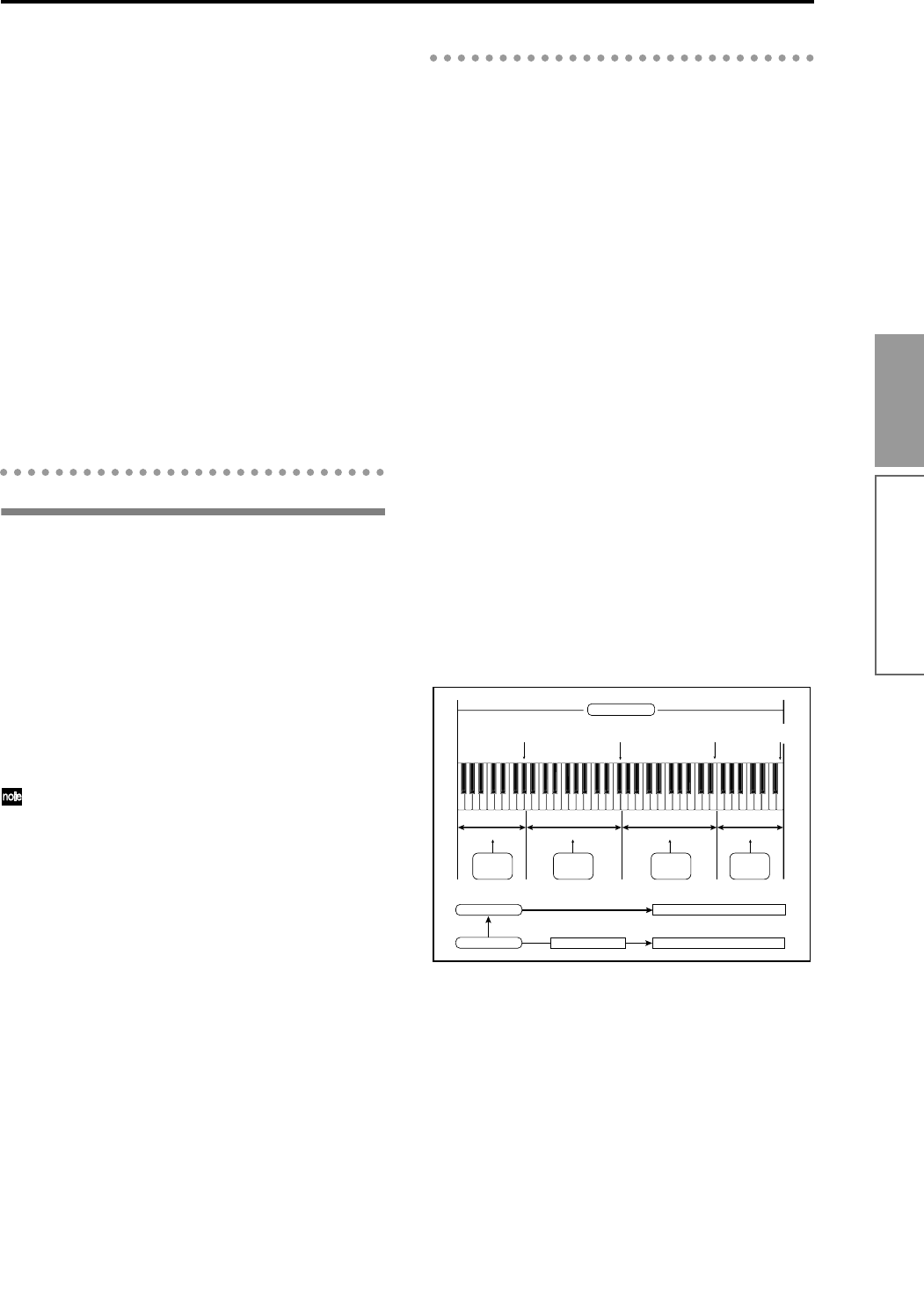
77
Basic functions
The “fixed intervals” mentioned above are generally
expressed as the “sampling frequency.” 48 kHz (kilo-
hertz) means that sampling is performed 48,000 times
each second, and that the interval is 1 (second)/48,000
(times) = approximately 0.00002083 (seconds) =
approximately 0.02083 mS (millisecond).
The higher the sampling frequency is, the closer to the
original analog signal the waveform in memory will
be.
Each level is read, and converted into digital data. The
accuracy at this time is determined by the bit resolu-
tion. The infinite number of levels in the analog signal
are converted into digital data with a finite number of
levels. With 16 bit resolution, each level is indicated in
65,536 steps (the sixteenth power of two).
The greater the bit resolution is, the closer to the origi-
nal analog signal the waveform in memory will be.
48 kHz 16 bit sampling is the same quality as in audio
devices such as DAT. A CD uses 44.1 kHz 16 bit sam-
pling, which is a slightly lower sampling frequency.
Samples and Multisamples
Samples
The data that is recorded (sampled) into internal mem-
ory or loaded from a file is referred to as a sample or
sample file. Samples consist of the actual waveform
data, and parameters that specify how the data will be
played back, such as Start, Loop Start, and End
Address.
Samples can be used by multisamples and drum kits.
The TRITON can hold a maximum of 4,000 samples in
its internal memory.
The TRITON can share a single waveform among
multiple samples. This allows you to create multi-
ple samples with different playback addresses
from the same waveform without wasting internal
memory. For example, suppose that you have
waveform data that records a voice saying “One-
Two-Three.” This single piece of waveform data
could be shared by three samples, with the play-
back of sample A producing “One-Two-Three,”
sample B producing “One-Two,” and sample C
producing “Two-Three.” Refer to “Copy Sample”
(p.83) in the Parameter Guide.
Multisamples
A multisample consists of settings that make one or
more samples sound in different areas of the keyboard.
A multisample consist of between one and 128
“indexes.” Each index contains parameters that specify
the sample that will playback, the zone for which it
will playback, the original pitch key, the playback
pitch, and level etc.
Using multisamples
When sampling an instrument that is able to produce a
wide range of pitches, such as a piano, recording just
one sample and using it (playing it back) over the
entire pitch range will not produce a natural-sounding
result. By using a multisample and assigning a sepa-
rately recorded sample to each portion of the pitch
range, you can produce a more natural sound. For
example, you might record one sample per octave, and
assign each of these samples to an index (keyboard
area). All of the instrumental sounds in the TRITON’s
internal preset ROM multisamples are constructed in
this way.
You can use a multisample to arrange multiple phrase
samples or rhythm loops across the keyboard, and play
two or more samples simultaneously. Since a different
phrase could be assigned to each key, you can perform
just as though you were using a pad-type sampler.
Alternatively, these samples could be assigned at one-
octave intervals, and played as phrase variations with
different playback pitches.
The TRITON can hold a maximum of 1,000 multisam-
ples in its internal memory.
A multisample can be selected as the oscillator for a
program, and played as a program. In a combination,
they can be combined with preset programs, and used
in a song. They can be used with the arpeggiator to
produce interesting results (for example, by using the
arpeggiator to automatically play sound effects or spo-
ken samples).
Multisample
Index 001
Index 002
Index 003
Index 004
Index001
Top Key
Index002
Top Key
Index003
Top Key
Index004
Top Key
0000:
Sample A
0001:
Sample B
0002:
Sample C
0003:
Sample D
Program OSC (Single/Double)
Multisample
Drum Kit
Sample
Program OSC (Drums)
Sampling mode


















